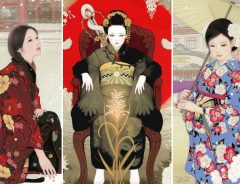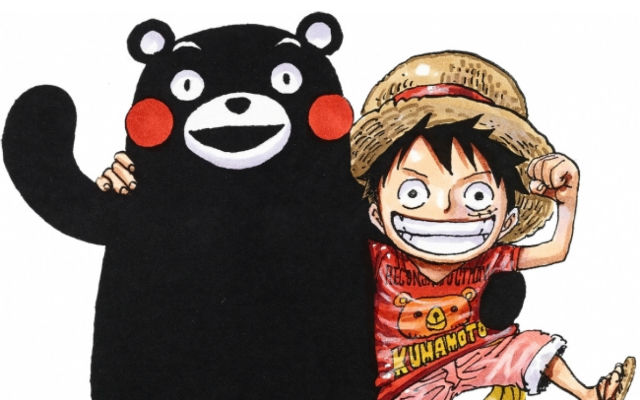- Tags:
- Characters / Japan / Mascots
Related Article
-

Italian has a heart-and-body-warming experience at a Japanese Starbucks
-

Japanese tomato farmer gets revenge on classmates who mocked his English in sweetest way possible
-

Watching This Japanese Sign-Maker’s Perfect Handwritten Work In Action Is Just Too Soothing
-

Beautiful Women In Kimono Grace The Breathtaking Artwork Of Miki Katoh
-

Vocal Shiba Inu Has Night And Day Before And After Nail Trimming Reactions
-

2016 Rice Paddy Art Displays Massive Works Of Godzilla And Samurai Warriors



Japan is the country of kawaii: many things are overly adorable here, and brands notice. Many companies take to painfully cute marketing strategies without a second thought. It seems that nearly anything that can bear branding is associated with an instantly likable, and imminently huggable character. Like blinky, big-eyed companions from a Pixar film, marketing mascots in Japan offer customers a warm welcome to, what at times can be, monolithic companies. Yet, this cultural tendency can result in some hard-to-explain mascots. Here are some of the more interesting examples.
Funassyi
The nasally and spastic Funassyi is a sight to behold. Hailing from Funabashi city, the mascot was the idea of a local resident who wanted to cheer the people of the city. The 4th of 274 children, this giant pear is high-energy and entertaining. Here it is trying to break a watermelon in order to receive a free massage.
Although Funyassi was denied becoming the official mascot of Funabashi, it has received significant notoriety. Funyassi has appeared on several TV shows and has even been interviewed by CNN.
To celebrate its success, the mascot traveled across the world. In its “Funyassi World Trip Project” on YouTube, the giant pear has visited Macao, NYC, and London.
Arukuma
The winner of the 2019 Yuru-chara (mascot) Grand Prix, Arukuma is a plump bear hailing from Nagano. The mascot is a fervent supporter of Nagano apples and other products from the region. He usually adorns a red Nagano-apple hood, but occasionally wears other shapes such as wine bottles, matsutake mushrooms, soba noodles, and various other iconic images.
Indeed, the gigantic bear is entirely huggable. See him and his friend do the Arukuma dance and you’ll see what I mean.
TsukIhashi Wataru Kun
Even bridges need representation. For Arashiyama, a traditional site in Western Kyoto with historical significance, they chose to hire TsukIhashi Wataru Kun as head of PR. A play on the Japanese characters for “Togetsukyo,” a famous bridge in the city, the mascot is a white, ghost-like figure with a bridge on its back. Although it permanently has a frightened expression, the mascot is quick to profess its affection for Arashiyama and its namesake bridge.
Kumamon
Kumamon is a large black bear with rosy-red cheeks and the yuru-chara mascot of Kumamoto. Created in celebration of the Kyushu bullet train, it is probably one of the most iconic mascots in the country.
Like Arukuma, Kumamon was a winner of the Yuru-chara Grand Prix. Following its victory and successful PR campaign, the mascot became a common source of merchandise. Kumamon's fame was so noteworthy that the bank of Japan estimated that the mascot generated 123.2 billion JPY ($1.2 billion) in sales.
Seiri Chan
This next one is maybe a little harder to understand: Seiri Chan is an anthromophized menstrual period. As we’ve touched on before, the fluffy heart-shaped character was originally part of a manga series by male author Ken Koyama. Despite Seiri Chan's hard-hitting attitude, the series was lauded by readers who considered the period a sympathetic yet down-to-earth depiction. The series became so popular it was even made its way into a 2019 theatrical release. And, of course, for this live-action movie, Seiri-Chan found herself represented as a giant fluffy mascot.
Shinobi-Chan
Accounting is rad—all the cool kids know this. Shinobi-Chan does too.
Shinobi-Chan is a pink ninja accountant. Wearing thigh-high boots and fishnet stockings and armed with razor-sharp ninja sickles, mascot promotes the virtues of accounting.
As it turns out, Shinobi-Chan works for an accounting firm. Although among employees, accounting has a reputation for being boring, she wants workers to know that its an integral part of customer satisfaction. And, don't worry, her company can help.
Chiitan
If you’re fan of John Oliver, you may be familiar with Chiitan. The out-of-control character was featured in an episode focusing on the phenomenon of Japanese mascots.
For the uninitiated, Chiitan was the self-proclaimed representative of Susaki, a small port town in Kochi Prefecture. It is a genderless 0-year-old fairy baby otter with a turtle it wears as a hat. While that all makes perfect sense, the mascot’s controversial SMS content led it into trouble.
See, Chiitan, as a young fairy baby otter, was prone to producing exceptional erratic, almost violent stunts in its videos.
As a result, the city of Susaki distanced itself from the mascot, threatening to sue if the character continued to produce content. While that very well could have been the end, fortunately, John Oliver's piece reignited interest in the mascot and made it something of an internet celebrity.